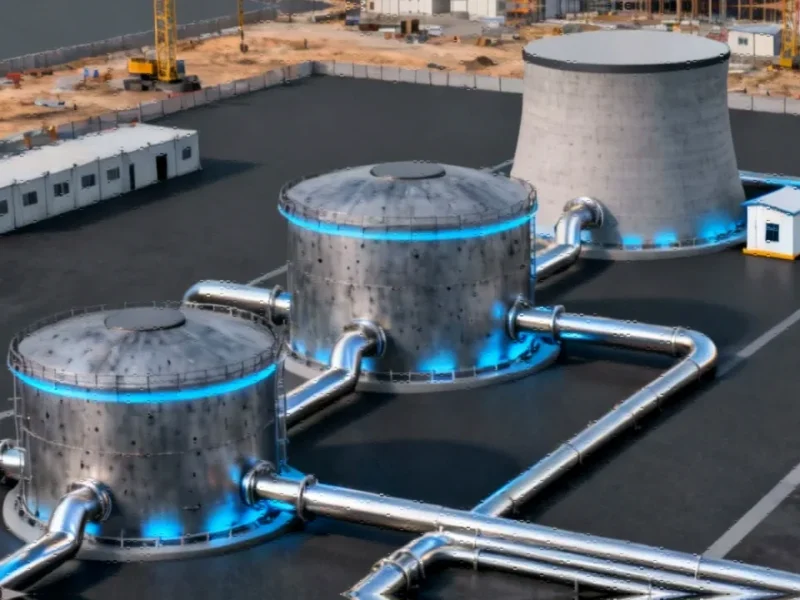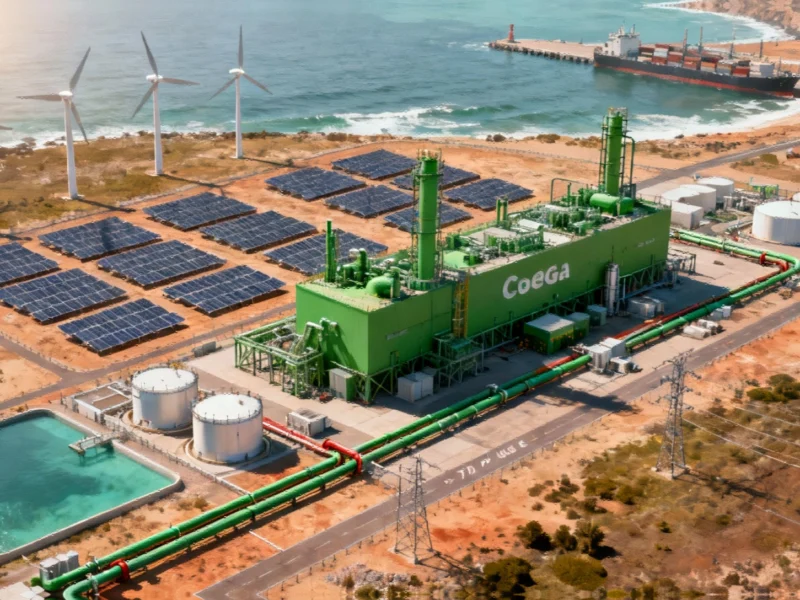Note: Featured image is for illustrative purposes only and does not represent any specific product, service, or entity mentioned in this article.
The Nuclear Power Play
Amazon’s ambitious partnership with X-Energy represents one of the most significant corporate bets on nuclear energy in recent history. The cloud giant’s commitment to deploy up to 960 megawatts of small modular reactor capacity in Washington State signals a fundamental shift in how tech companies approach their massive energy requirements. While traditional data centers have relied on grid power supplemented by renewables, Amazon’s nuclear aspirations could establish a new paradigm for industrial power consumption.
Technical Specifications and Deployment Timeline
X-Energy’s Xe-100 reactor design promises 80 megawatts per unit, with Amazon planning to deploy these modular nuclear systems in three phases at the Cascade Nuclear Energy Center near Richland, Washington. Each phase will deliver 320 megawatts, with the full deployment not expected until the 2030s. For perspective, this capacity could power approximately 700,000 homes or, in Amazon’s case, multiple hyperscale data centers simultaneously.
The timing raises questions about interim power strategies, particularly as companies navigate complex regulatory environments that often delay ambitious energy projects. Amazon’s phased approach suggests the company anticipates these challenges and is planning accordingly.
Regulatory Hurdles and Industry Context
X-Energy faces significant regulatory obstacles before breaking ground. The company’s reactor technology must first receive Nuclear Regulatory Commission approval, a process that has proven challenging for many nuclear innovators. This regulatory landscape is constantly evolving, as seen in broader governmental interventions affecting energy and technology sectors.
Amazon isn’t alone in pursuing atomic solutions. Oracle has announced plans for at least three SMRs to power gigawatt-scale operations, while Google-backed Kairos Power aims to deploy a 50MW molten salt reactor. These parallel developments suggest a growing consensus among tech giants that nuclear power represents the most viable path to sustainable, high-density energy.
Economic Considerations and Risk Assessment
The economic argument for SMRs centers on their purported advantages over conventional nuclear plants: smaller footprint, faster deployment, and lower operating costs. However, these claims remain largely theoretical. Previous SMR projects have encountered higher-than-expected operating costs, raising questions about the financial viability of Amazon’s ambitious plan.
Recent industry risk assessments highlight how complex energy projects can encounter unexpected financial and operational challenges. Amazon’s $500 million investment in X-Energy represents just the beginning of what will likely be a much larger capital commitment.
Strategic Partnerships and Global Cooperation
Amazon and X-Energy have enlisted South Korea’s Doosan Enerbility and Korea Hydro and Nuclear Power to support SMR deployment across the United States. This international collaboration underscores the global nature of both the energy challenge and potential solutions. Such partnerships are becoming increasingly common as companies seek to leverage cross-border technological innovations.
The involvement of established nuclear technology providers from South Korea brings valuable experience to the project, potentially mitigating some of the technical risks associated with first-of-a-kind reactor deployments.
Alternative Nuclear Strategies
While betting on next-generation SMR technology, Amazon is simultaneously pursuing more conventional nuclear solutions. The company’s $650 million acquisition of Cumulus Data’s atomic data centers in Pennsylvania provides immediate access to 2.5 gigawatts of nuclear capacity from the Susquehanna power plant. This dual-track approach suggests Amazon is hedging its bets between proven nuclear technology and innovative SMR designs.
Microsoft is pursuing a similar strategy, financing the restart of the Three Mile Island Unit-1 reactor (not the unit involved in the 1979 incident), with operations expected to resume in 2027. These moves reflect how storage and power innovations are driving broader technology infrastructure decisions.
Technology Validation and Competitive Landscape
X-Energy faces competition from companies like Kairos Power, which has already secured NRC approval for its Hermes 2 demonstrator reactor. This regulatory head start could give competitors an advantage in the race to deploy working SMRs. The success of these projects will depend on multiple factors, including testing and validation processes that ensure safety and reliability.
Amazon’s comprehensive partnership with X-Energy represents a landmark moment for industrial power strategy. The company’s goal to deploy 5 gigawatts of SMR capacity by 2039 would represent one of the largest corporate nuclear power commitments in history.
Broader Implications for Industrial Computing
The success or failure of Amazon’s nuclear strategy will have far-reaching implications for the entire industrial computing sector. If SMRs prove viable, they could provide the high-density, carbon-free power needed to support increasingly demanding computational workloads, including AI training and scientific computing. However, the decade-long timeline for deployment means companies must navigate current technology constraints while planning for future energy availability.
As the industry watches Amazon’s nuclear ambitions unfold, the outcome will likely influence power strategy across the technology sector for decades to come, potentially reshaping how we think about energy, computation, and sustainability in the digital age.
This article aggregates information from publicly available sources. All trademarks and copyrights belong to their respective owners.



